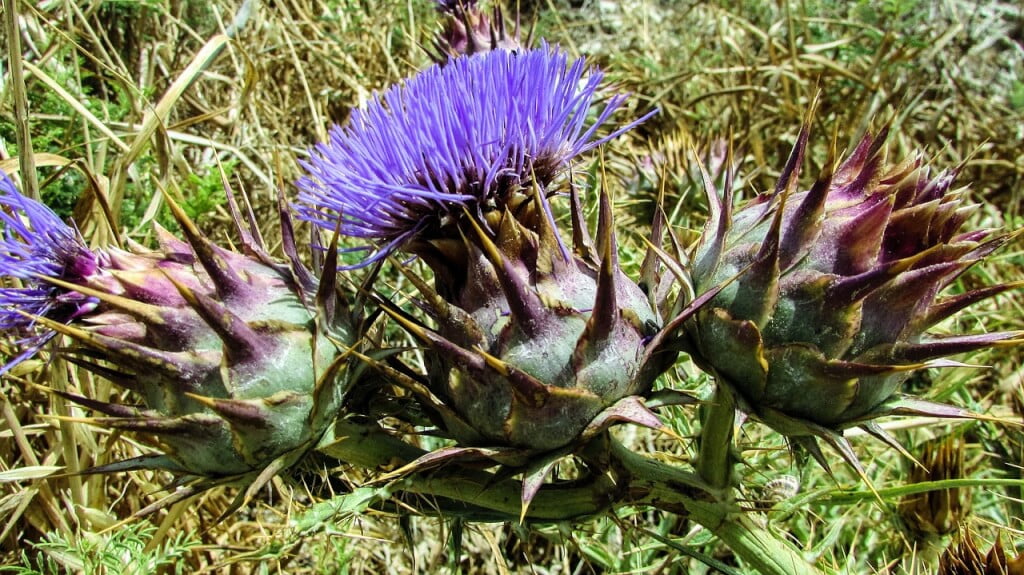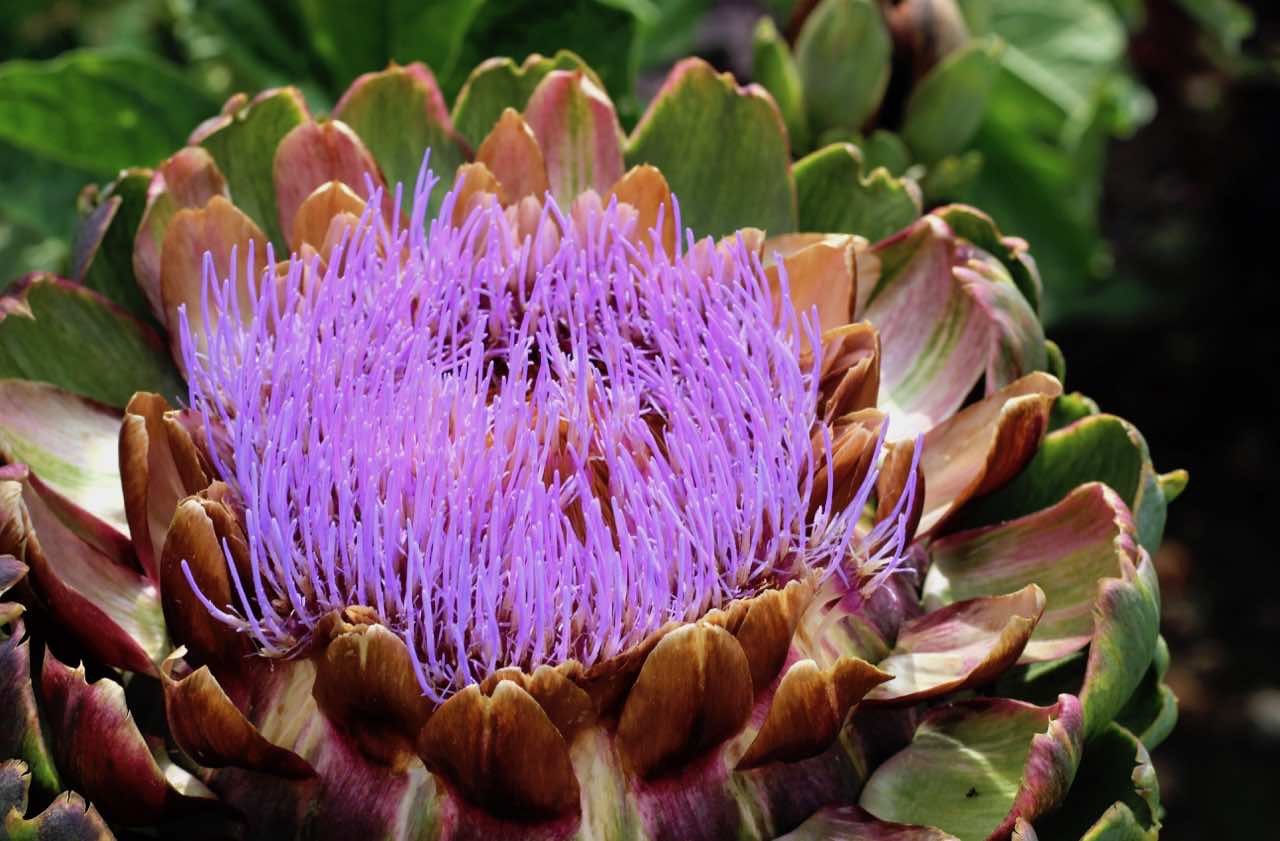Hi @tankboy74
Great to hear from you and the fact you're growing one of my favourite 'garden bad boy plants', the Cardoon!
They are impressive, otherworldly, and gigantic in most gardens. I have a number of them here at Garden Ninja HQ and love them. The best time to deadhead them is when the head sags or looks like it is 'looking down'. This is so the plant doesn't fall over or damage the crown under the ground. I tend to cut them back to the top set of white spiky leaves.

With most herbaceous perennials, I leave them until February to cut them back, so I have winter interest, but not with Cardoons. This is because they are quite prone to frost damage and wind rock. They look brutally tough, but they do need free draining soil and a tad more babysitting than other plants. So snip them off now and then take the main stem to just above the foliage and compost your cuttings.
https://youtu.be/_-jYc-Ruu8o
For other Ninjas out there considering planting Cardoons, here is some more general planting tips.
How to Plant Cardoons
Cardoons (Cynara cardunculus) are striking, thistle-like plants related to the artichoke, prized for both their ornamental appeal and edible stalks. Here are the ideal growing conditions for cardoons:
Soil
- Prefer well-drained, fertile soil with a slightly acidic to neutral pH (6.0–7.0).
- Rich, loamy soil is best, but they can tolerate poorer soils if well-drained.
Sunlight
- Cardoons require full sun, at least 6 hours of direct sunlight daily, to thrive and produce robust growth.
Watering
- Need consistent moisture, particularly during dry periods in the summer, as they put on rapid growth.
- Avoid waterlogging Cardoon, as soggy conditions can cause root rot. Cardoons hate clay soil.

Temperature
- Cardoons prefer cooler climates and grow best in temperatures between 10°C and 24°C.
- They can tolerate light frost but are typically grown as annuals in colder regions.
- They love full sun and won't flower in shade.
Spacing
- Plants need plenty of space to grow, with a recommended spacing of about 1 meter between each plant to accommodate their large size. They grow really big, especially in free-draining, sun-drenched flower beds, so take this into account. When they arrive as little p9 plant pots, you will not believe how big they get.
Fertilization & Support
- Benefit from regular feeding with a balanced fertilizer, especially during their growing season, to support vigorous growth and healthy foliage.
- Cardoons will need stakes, canes or support as they grow in flower beds as they usually become top heavy if not.
https://youtu.be/5BhGtCjT2TQ
When to prune Cardoons
- Prune back Cardoons in late September when their heads start to droop; this protects them from being uprooted by wintery winds as the heads are often far heavier than the stems. So, it is best to prune them back just above the foliage in autumn, not late winter, like most herbaceous perennials.
Hope that helps!
Lee Garden Ninja
Hi @tankboy74
Great to hear from you and the fact you're growing one of my favourite 'garden bad boy plants', the Cardoon!
They are impressive, otherworldly, and gigantic in most gardens. I have a number of them here at Garden Ninja HQ and love them. The best time to deadhead them is when the head sags or looks like it is 'looking down'. This is so the plant doesn't fall over or damage the crown under the ground. I tend to cut them back to the top set of white spiky leaves.

With most herbaceous perennials, I leave them until February to cut them back, so I have winter interest, but not with Cardoons. This is because they are quite prone to frost damage and wind rock. They look brutally tough, but they do need free draining soil and a tad more babysitting than other plants. So snip them off now and then take the main stem to just above the foliage and compost your cuttings.
For other Ninjas out there considering planting Cardoons, here is some more general planting tips.
How to Plant Cardoons
Cardoons (Cynara cardunculus) are striking, thistle-like plants related to the artichoke, prized for both their ornamental appeal and edible stalks. Here are the ideal growing conditions for cardoons:
Soil
- Prefer well-drained, fertile soil with a slightly acidic to neutral pH (6.0–7.0).
- Rich, loamy soil is best, but they can tolerate poorer soils if well-drained.
Sunlight
- Cardoons require full sun, at least 6 hours of direct sunlight daily, to thrive and produce robust growth.
Watering
- Need consistent moisture, particularly during dry periods in the summer, as they put on rapid growth.
- Avoid waterlogging Cardoon, as soggy conditions can cause root rot. Cardoons hate clay soil.

Temperature
- Cardoons prefer cooler climates and grow best in temperatures between 10°C and 24°C.
- They can tolerate light frost but are typically grown as annuals in colder regions.
- They love full sun and won't flower in shade.
Spacing
- Plants need plenty of space to grow, with a recommended spacing of about 1 meter between each plant to accommodate their large size. They grow really big, especially in free-draining, sun-drenched flower beds, so take this into account. When they arrive as little p9 plant pots, you will not believe how big they get.
Fertilization & Support
- Benefit from regular feeding with a balanced fertilizer, especially during their growing season, to support vigorous growth and healthy foliage.
- Cardoons will need stakes, canes or support as they grow in flower beds as they usually become top heavy if not.
When to prune Cardoons
- Prune back Cardoons in late September when their heads start to droop; this protects them from being uprooted by wintery winds as the heads are often far heavier than the stems. So, it is best to prune them back just above the foliage in autumn, not late winter, like most herbaceous perennials.
Hope that helps!
Lee Garden Ninja
 Lee Burkhill: Award Winning Designer & BBC 1's Garden Rescue Presenters Official Blog
Lee Burkhill: Award Winning Designer & BBC 1's Garden Rescue Presenters Official Blog



